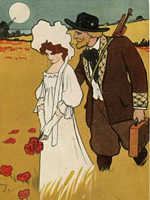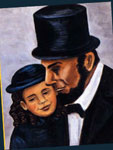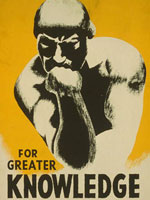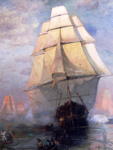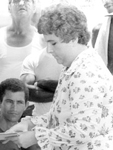Fifth Graders as Historical Detectives: Solving Historical Puzzles
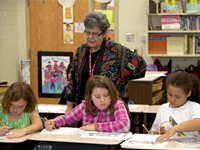
Who says that elementary students can't think historically? A researcher from University of Maryland College Park challenged that assumption in a recent study. Through direct instruction in historical analysis skills, Bruce VanSledright's students not only showed marked improvements in their work but also became excited about a subject in which they had previously expressed little interest.
VanSledright spent four months teaching 5th-grade American history in a diverse urban elementary school that included several English Language Learners. For his study sample, he chose eight students of different skill levels. He closely followed students' development as historical thinkers, and conducted before-and-after evaluations assessing their ability to analyze historical documents. For the pre-tests, students looked at two texts and three images concerning the Boston Massacre, and they sought to figure out what had happened, which accounts were accurate, and why. For the post-tests, students looked at four texts and two images concerning the battle at Lexington Green and conducted similar analyses. During both assessments, VanSledright had students think aloud, describing what they were thinking and wondering as they examined the documents.
VanSledright engaged students in investigating historical problems, explaining to them that they were going to be "historical detectives," doing the sort of work that journalists often do. He taught two units—one on the colonization of North America by the British, and one on the American Revolution—looking at particular puzzles like the "starving time" in Jamestown Colony and the causes of the American Revolution. He aimed to take students beyond simple reading comprehension and taught them how to read, interpret, and analyze historical documents in order to investigate particular puzzles. He also instructed students in comparing sources, evaluating them for perspective, and judging their reliability. Finally, he taught students to synthesize varied historical accounts in order to construct a narrative of what happened.
After four months of careful instruction in historical reading, all students showed marked improvement. Their first improvement was in reading individual texts, which they learned to analyze critically, examine for point of view, and place in context. Their next major improvement was in reading multiple texts together, which required cross-referencing, synthesizing, and evaluating texts for bias. All eight students gained some ability as historical readers by the end of the semester, and four demonstrated occasional expertise. Equally important, all students became more interested in history.
For their work on the American Revolution, students studied possible causes of the conflict. They were encouraged to consider point of view and understand the role of perspective in making sense of evidence. They were then assigned to work on newspaper beats for papers with particular points of view. Armed with packets of primary and secondary sources, students researched their beats and produced a story and illustration consistent with the position of their paper (see sample application).
- Introduce historical thinking as detective work or similar to the work that journalists do when piecing together a story. This kind of historical discovery can be fun for younger students.
- Try modeling a "think-aloud" for students as you read a document. Tell students that you are going to share your thoughts as you read and ask them to pay attention to the questions you ask, the mental notes you make, and the types of things you are looking for.
- Remember to use visual primary sources as well as written ones to teach students historical analysis.
Take a close look at the causes of the American Revolution and ask your students to make sense of different viewpoints, including those of the rebels, the loyalists, the British citizens who supported King George, and others. Use primary sources to study reactions to the Stamp Act, the Townshend Acts, the Boston Massacre, the Boston Tea Party, and the first shots fired at Lexington Green. Then create newspaper headlines to show the different points of view for the five events.
Sample Student Work
The London Times, Shootings in Boston, Five Rebels Get What They Deserve: ". . . its citizens armed, supported by untold thousands of hideous farmers ready to invade the town . . . As you can see England had to defend themselves or they would have gotten killed. Till next issue...Good day!'
The Boston Evening-Post, British Tea Tax Brings Americans Great Misery: ". . . there were a lot of reasons that the colonists had for fighting against the tea tax. One of them was the tax was totally unfair and made a joke of common sense . . . The tea tax was giving the colonists a headache!"
The Boston Globe, Boston, Citizens Beat British Guards with Clubs: "…one soldier fired at an American in self-defense after the colonists hit his arm . . . Even though the captain said, "Don’t fire" the other soldiers fired after the first man fired. Three British soldiers died that day (in twenty minutes) by the mob."
Interview with Bruce VanSledright, http://www.mdk12.org/instruction/curriculum/social_studies/bruce_vansle…
Bruce A. VanSledright, In Search of America's Past: Learning to Read History in Elementary School. (New York: Teachers College Press, 2002).
Bruce A. VanSledright, "Can 10 Year Olds Learn to Investigate History as Historians Do?" OAH Newsletter, August, 2000. Also available online at http://www.oah.org/pubs/nl/2000aug/vansledright.html.
